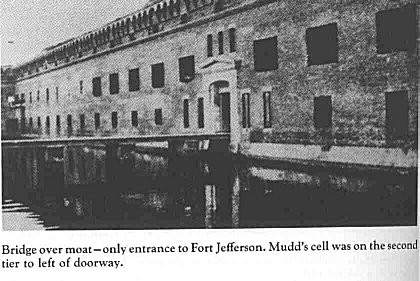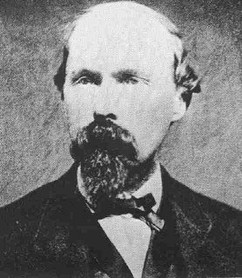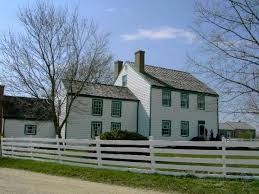Dr. Samuel Mudd House Museum
Introduction
Text-to-speech Audio
Images
The photo is from "Lincoln's Assassins: A Complete Account of Their Capture, Trial, and Punishment" by Roy Z Chamlee, Jr.

Dr. Samuel Alexander Mudd, Library of Congress photograph

Dr. Mudd's House is now operated as a museum and is open daily for tours.

Backstory and Context
Text-to-speech Audio
Dr. Samuel Alexander Mudd was born December 20, 1833, in Charles County, Maryland. Dr. Mudd was raised on the family plantation "Oak Hill," approximately 30 miles from downtown Washington, D.C., and received his early education at Frederick, Maryland. After general education, Dr.Mudd then attended Georgetown College in Washington, D.C. In 1854 Mudd transferred to the University of Maryland in Baltimore and studied medicine and surgery. He graduated from that institution in 1856. After graduation, Dr. Mudd returned home and began life as a practicing physician and farmer.
On Sunday, November 13, 1864, John Wilkes Booth first met Dr. Mudd at St. Mary's Church near Bryantown, Maryland. Evidence suggests the second meeting with both men took place on December 18 at the Bryantown Tavern. Then, on December 23, the two men met yet again in front of Booth's hotel (the National Hotel) in Washington, D.C. Booth wanted Dr. Mudd to introduce him to the Confederate courier, John Surratt. Walking along 7th Street, the men came upon none other than Louis Weichmann and John Surratt. Supposedly, John Wilkes Booth invited all three men up to his hotel room for a drink.
As stated before in the introduction, after helping Booth with his leg injury he was paid 25 dollars for his services. Within days Dr. Mudd was under arrest by the United States Government. He was charged with conspiracy and with harboring Booth and Herold during their escape. Dr. Mudd was found guilty. His sentence was life imprisonment. He missed the death penalty by one vote. Dr. Mudd was imprisoned at Ft. Jefferson in the Dry Tortugas which is 70 miles from Key West.
Dr. Mudd was allowed to stay in mail contact with his wife. Mrs. Mudd also wrote letters to President Andrew Johnson for her husband to be released. He tried to escape and failed on September 25, 1865. In February of 1867, Dr. Mudd was assigned to the prison's carpentry shop. In the summer of 1867, yellow fever broke out on the island. After the fort's physician died on September 7, Dr. Mudd took a leadership role in aiding the sick. Dr. Mudd, himself, came down with the disease but recovered. Because of his outstanding efforts, all noncommissioned officers and soldiers on the island signed a petition to the government in support of Dr. Mudd.
Dr. Mudd was released from Ft. Jefferson on March 8 and arrived home on March 20. He had served somewhat less than four years in prison. He partially regained his medical practice and lived a quiet life on the farm. On January 10th, 1883, Dr. Mudd died of pneumonia at the age of 49. He was buried in St. Mary's cemetery next to the Bryantown church where he first met Booth in 1864.
Sources
Jones, John Paul. Dr. Mudd and the Lincoln Assassination: The Case Reopened. Conshohocken, PA: Combined Books, 1995.
